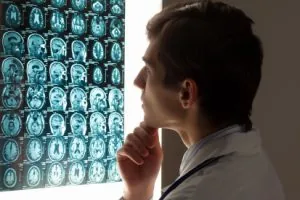4 Must-Know Facts About the Deadliest Brain Tumor
Glioblastoma multiforme—also known as GBM—is the most lethal form of brain cancer in adults. This devastating brain cancer spreads into other parts of the brain very quickly and is usually not surgically curable. Typically, radiation and chemotherapy are given with the hopes of delaying tumor progression. If you or a loved one is diagnosed with GBM, here are 4 important facts you need to know:
 Brain Tumor Statistics
Brain Tumor Statistics
- GBM kills 95% of patients within five years of diagnosis, with more than half dying within the first 15 months after diagnosis.
- Although GBM can occur in any age group, it is most common in adults between the ages of 45-70.[i]
- This year, more than 12,000 people living in the U.S. and tens of thousands more worldwide will receive a diagnosis of GBM. [ii]
1. Connect with a doctor(s) who specializes in GBM.
 As with any rare or aggressive cancer, it’s best to seek care from a doctor who spends all of his or her time treating that particular disease. When it comes to GBM, there are many nuances to both its diagnosis and treatment that require expert knowledge. Second opinions are also extremely important as they will either confirm what you’ve already been told or present different options to weigh.
As with any rare or aggressive cancer, it’s best to seek care from a doctor who spends all of his or her time treating that particular disease. When it comes to GBM, there are many nuances to both its diagnosis and treatment that require expert knowledge. Second opinions are also extremely important as they will either confirm what you’ve already been told or present different options to weigh.
2. Know the facts.
GBMs are extremely complex tumors. Complete surgical removal of the entire tumor is extremely difficult because these tumors have finger-like tentacles that extend into surrounding normal brain tissue. GBMs are also made up of a wide mix of different cell types that often differ from patient to patient. Additionally, when GBMs recur or grow back—and they almost always do–the molecular profile of the tumor changes dramatically. As a result, response to treatment varies considerably and today’s five-year survival for GBM is less than 5%.
3. With GBM AGILE, the future looks promising.
Currently there is no cure for GBM. Although there have been hundreds of standard clinical trials for GBM, survival rates for patients with GBM have not improved in any meaningful way in more than 30 years… GBM AGILE brings tremendous hope to patients battling GBM today.
What is GBM AGILE?
Over 150 researchers from more than 40 leading cancer institutions across four continents have come together to find cures for GBM by launching the first-ever global, adaptive clinical trial that will revolutionize how brain cancer treatments are tested and developed. This new type of clinical trial platform is called GBM Adaptive Global Innovative Learning Environment, or GBM AGILE for short. By offering the ability to access to the newest, most promising treatments quickly and in real-time, GBM AGILE will provide people living with brain cancer new hope where little currently exists. While adaptive trials are not yet commonplace, Congress and the FDA are focused on accelerating their development to benefit patients, including GBM AGILE.
4. NFCR is attacking GBM head on.
With GBM AGILE, medical research is being transformed right now by the biggest global collaboration in the history of brain cancer research. NFCR has provided seed funding for this revolution and as part of the executive steering committee, is helping to develop and manage this groundbreaking adaptive trial protocol.
The GBM AGILE team is currently in discussion with the USA’s FDA (Food and Drug Administration) to create a process that will make it faster for patients to access the promising drugs that are being tested in this clinical trial. This will be done by allowing seamless transition from Phase II to Phase III of the trial which does not traditionally happen in the current clinical trial format. The protocol is nearly complete, and patient enrollment is expected to begin in January, 2018 giving patients worldwide the best chance to treat their disease.












